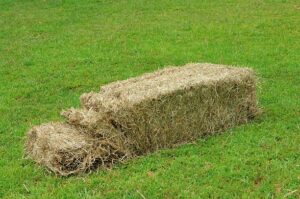There are several benefits of using baler twine for Hay Baling. These advantages include long-lasting, easy-to-handle, biodegradable and cost-effective. It also helps prevent waste build-up in the environment. However, it is important to dispose of twine properly. It can be done by placing it in a bag or bin before throwing it away.
Long-lasting
 The type of baler twine you use is important for the quality and longevity of your hay bales. So, it makes sense to get it from a credible baler twine manufacturer. The twine you choose should be long-lasting and easy to handle. It should also have good tensile and knot strength. In addition, it should be durable and resistant to rot and mildew. It would be best if you also looked for a spool size that matches the tying system of your baler. It will guarantee proper winding and an optimum cost per bale.
The type of baler twine you use is important for the quality and longevity of your hay bales. So, it makes sense to get it from a credible baler twine manufacturer. The twine you choose should be long-lasting and easy to handle. It should also have good tensile and knot strength. In addition, it should be durable and resistant to rot and mildew. It would be best if you also looked for a spool size that matches the tying system of your baler. It will guarantee proper winding and an optimum cost per bale.
Most balers are capable of using both sisal and polypropylene (poly) twine, so you have many options to consider. Sisal twine is made of individual strands of plant materials twisted together and is naturally biodegradable. Poly is a plastic polymer that won’t break down any time soon, but it does offer more tensile strength than sisal twine.
While twine-wrapped bales can hold up well under the right conditions, they are more likely to deteriorate in high moisture environments. In these cases, it’s a good idea to wrap your bales in net wrap first before tying them with twine. It will prevent moisture damage and increase the durability of your bales. It is especially true if you store the bales on a pallet or in a sheltered site. In addition, it’s a good idea to recycle your old twine whenever possible to save money and avoid harming Osprey and other wildlife in the process.
Easy to handle
It’s important to choose the right baler twine manufacturer for your farm. The twine must be of the correct weight and dimensions to ensure proper handling. It should also be UV-protected to prevent premature degradation caused by exposure to sunlight. It is also a good idea to consider the tensile strength and twists per meter when selecting twine for your baler. The higher the number of twists, the stronger it will be.
Using baling twine is a great way to secure hay or straw bales together and keep them dry. It also helps to minimise storage and transportation loss. It’s easy to work with, and it’s long-lasting so that it won’t wear out quickly. It’s also affordable and biodegradable, so you won’t have to worry about it contaminating the environment.
Many horse owners use a thick poly twine known as baling twine to tie up hay bales, but there are many other uses for it. For example, it can be used to tie down items in a truck or trailer. It’s even useful for cleaning since you can get several strands together and make a scrubber to clean buckets or tack rooms.
Baling twine is available in a variety of colours and materials, from natural fibres like sisal to synthetic polypropylene. Farmers often prefer the latter because of its durability, resistance to weathering and UV radiation exposure, and biodegradability. It’s also less flammable than sisal, and it comes in a range of thicknesses to suit different balers, crops, and baling conditions.
Biodegradable
Choosing the right twine for your balers can make a huge difference in the quality of the hay you produce. It also affects your bottom line and your environmental impact. Using biodegradable twine is a great choice for both of these reasons. Biodegradable twine is made from natural fibres like jute or sisal. These are twisted together into a twine that has a high tensile strength. It also resists insect and vermin infestations and is safe for your livestock. This twine is a good option for your balers, especially in dry conditions.
Another advantage of biodegradable twine from a baler twine manufacturer is that it can be used on smaller bales. These can be more easily handled and transported, saving you time and money. In addition, it is much easier to tie than wire twine and offers greater tensile strength. It is available in various colours and is easy to find online.
Most synthetic baling twine is made from polypropylene, which is a plastic polymer that will not degrade any time soon. It is a good option for baling hay, as it can hold knots well and is durable. It is also resistant to organic solvents, degreasers, and electrolytes. Some types of polypropylene twine are recyclable, and some companies offer twine recycling programs to keep it out of landfills. Check the guaranteed number of feet per carton when buying a spool of twine to avoid getting more than you need.